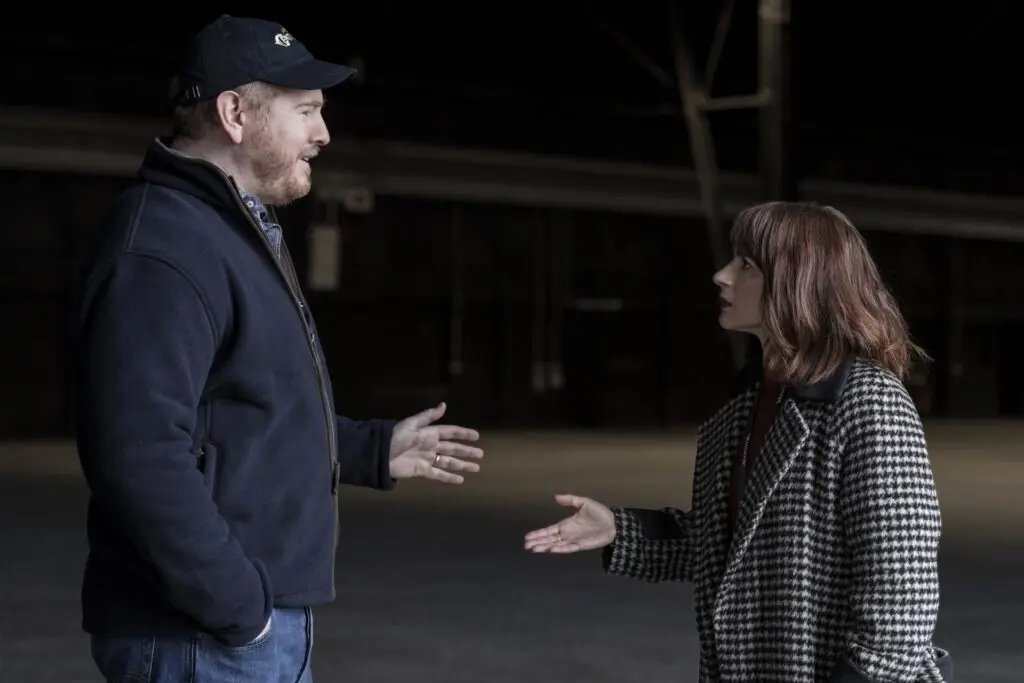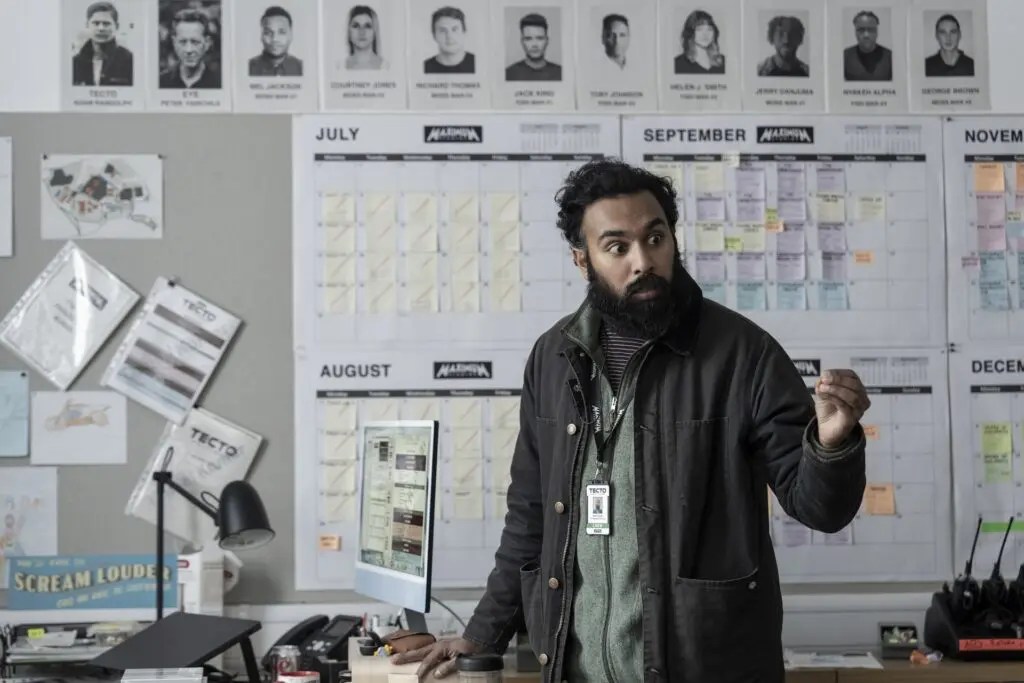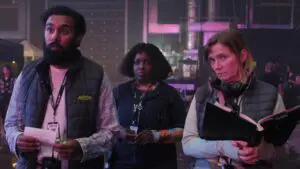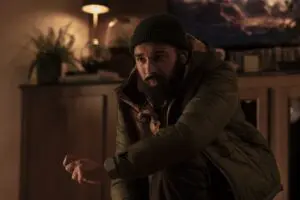Summary
“Scene 36: The Invisible Jackhammer” is just as funny as the premiere, but is also the episode where The Franchise really lands on its underlying point.
I wish I knew more about Tecto, the hero of the inevitably doomed superhero flick at the heart of The Franchise. There’s no way this guy is a serious character, right? Nobody’s buying his merch. According to Episode 2, “Scene 36: The Invisible Jackhammer”, it’d be impossible to sell it anyway, since at least one of his gadgets is… well, invisible.
The dilemma at the heart of this outing – which is better than the premiere, for what that’s worth – is whether the titular scene, in which Adam has to use a pogo stick as a stand-in for an invisible jackhammer that hoists himself and Peter into the air, is too ridiculous to be filmable. The reflexive answer is, simply, “yes”, but it’s a more complex question than it first seems.
A lot of comic book storytelling is dumb. We all know this. Some of it is literally too dumb to be translated into live-action, but this tends to be the line that gets blurry whenever studios, like Maximum here, get “addicted to announcing stuff”. And once the announcements are made, then what? Episode 2 of The Franchise hinges on the journey of a bad idea, from hasty conception to false promise to immovable albatross. And it’s very funny.
The invisible jackhammer scene becomes, like everything else, the responsibility of Dan, who scarcely has enough vapes to stave off the inevitable breakdown heading his way. Peter’s dodgy spine can only survive three takes. Adam is worried that his Dorito physique doesn’t speak to someone who can create earthquakes. Peter doesn’t like being number two on the call sheet. Eric wants an army of Moss Men extras in the scene, but he only has five, and Dag wants to wear headphones, which for reasons I still haven’t figured out would undermine Dan’s authority.

Darren Goldstein and Aya Cash in The Franchise | Image via HBO
But this also becomes the responsibility of the new producer, Anita, who isn’t as much of a bad guy as the first episode implied she would be. “Scene 36: The Invisible Jackhammer” is written by Tony Roche (The Thick of It, Veep) and directed by Liza Johnson, but most of its storytelling is bundled up in the face of Aya Cash, who plays Anita’s two modes – unflappably menacing and existentially terrified – like her life depends on it.
Anita has previous with Dan – they were sleeping together until she moved on to an Australian actor behind his back. She wants to put a stamp of authority on the production by scheduling pre-dawn emergency meetings that she cancels at the last minute and refusing to get Eric any more Moss Men, but her efforts are a transparent attempt to stave off any funny looks from Maximum Studios higher-ups who are rapidly realizing they have oversaturated the marketplace with unworkable tripe like Tecto.
Daniel knows this, on some level, which is why he acquiesces to a public dressing-down for problems that aren’t remotely his fault. Dag has realized it, too. At one point she ponders whether the studio lot isn’t a “dream factory” as advertised, but an abattoir where culture goes to die. She’s right, of course, but the path of a good idea – inspired by Dag, Dan gets Anita to try and have the jackhammer scene excised entirely by Pat – is fraught with significantly more resistance than a bad one. Almost immediately after trying to do right by the movie, Anita realizes she’s utterly powerless.
The Franchise Episode 2 proves what I speculated on in my recap of the premiere, that the show is not about moviemaking, per se, but about the culture of fear and bureaucracy and creative ineptitude that surrounds tentpole comic-book blockbusters. It’s about the ostensibly ordinary people who are lured into doing the heavy lifting, having their names and faces used as scapegoats for the inevitable failures of greedy executives whose only appreciation or understanding of art is in how much they can sell it for. That really coalesces in “Scene 36: The Invisible Jackhammer”, and it should prove to be a valuable theme for the rest of the series.
RELATED:




